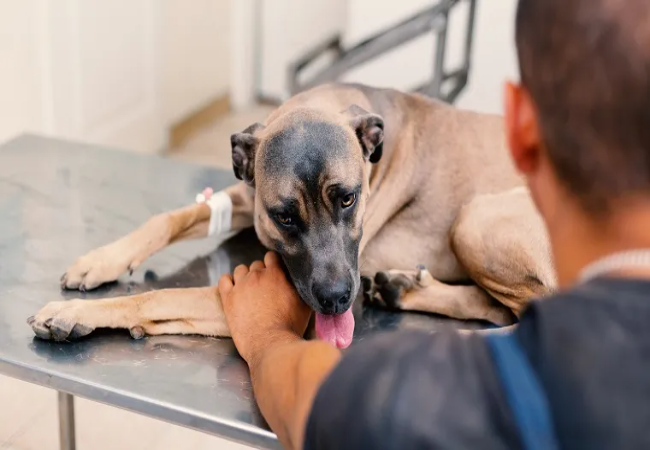Vet Approved Guide: Arteriovenous Fistulas in Dogs – Causes, Signs & Treatment 2025 🐶🐾

In this article
Vet Approved Guide: Arteriovenous Fistulas in Dogs – Causes, Signs & Treatment 2025 🐶🐾
By Dr. Duncan Houston BVSc
An arteriovenous fistula is an abnormal connection between an artery and a vein that bypasses capillary beds. While rare, these fistulas can significantly impact your dog’s health depending on location and size. Let’s explore what they are, how they present, and treatment options to help your pup thrive. 🛡️
🔍 What Is an Arteriovenous Fistula?
An arteriovenous fistula (AVF) is a low-resistance pathway directly connecting an artery to a vein. This causes high-volume blood flow that bypasses normal tissue perfusion. Larger fistulas may stress the heart and lead to “high-output” congestive heart failure. AVFs can be congenital or acquired after trauma, surgery, tumors, or vascular injury.
📌 Common Locations
AVFs have been reported in diverse sites such as the head, neck, limbs, ear, tongue, abdomen, lungs, liver, spinal cord, brain, or major vessels like the vena cava.
🛑 Signs to Watch For
- Swelling or Warm Mass: May pulsate or feel warm, especially on limbs, with possible pitting edema, ulceration, or gangrene.
- Cardiac or Respiratory Signs: Coughing, rapid breathing, exercise intolerance, or heart rate in cases of high-output failure.
- Organ-Specific Symptoms: Liver (abdominal distension), brain (seizures), spinal cord (weakness/paralysis).
❗ What Causes AVF in Dogs?
- Congenital: Some dogs are born with AVFs due to vascular malformations.
- Trauma or Medical Intervention: AVFs may develop after blunt trauma, surgeries, injections, blood draws, or from tumors.
🩺 How Is AVF Diagnosed?
- Physical Exam: Warm lesions, bruit, turbulent flow on palpation.
- Bloodwork: CBC, biochemistry, urinalysis to assess organ impact.
- Imaging: X-rays may show cardiac enlargement or pulmonary changes; Doppler ultrasound reveals turbulent flow; echocardiography and angiography help with planning.
🛠️ Treatment Options
- Surgical Ligation: Removing abnormal vessels. This is effective but complex, potentially requiring transfusion and repeat surgery if recurrence occurs.
- Transcatheter Embolization: A minimally invasive option using catheters to block the fistula, which has become increasingly available and effective.
🔄 Post‑Treatment Care & Monitoring
- Regular follow-ups to check for recurrence.
- Treat signs of heart failure or organ dysfunction as needed.
- Monitor wound healing and check for any new swelling or symptoms.
🎯 Prognosis
With proper treatment, many dogs do well, though recurrence is possible. Without intervention, large AVFs can lead to heart failure or severe complications like limb necrosis or organ failure.
📱 Support Your Dog with These Tools
- Ask A Vet: 24/7 expert advice for pre- and post-treatment care. 🩺
🎯 Final Thoughts
Arteriovenous fistulas in dogs, though rare, are serious vascular anomalies that demand veterinary attention. Early detection, accurate imaging, and timely intervention—whether surgical or catheter-based—can lead to good outcomes. When cared for properly, many dogs recover well and return to happy, health-filled lives. 🐾
For personalized guidance and support, download the Ask A Vet app today. 📲🐶






